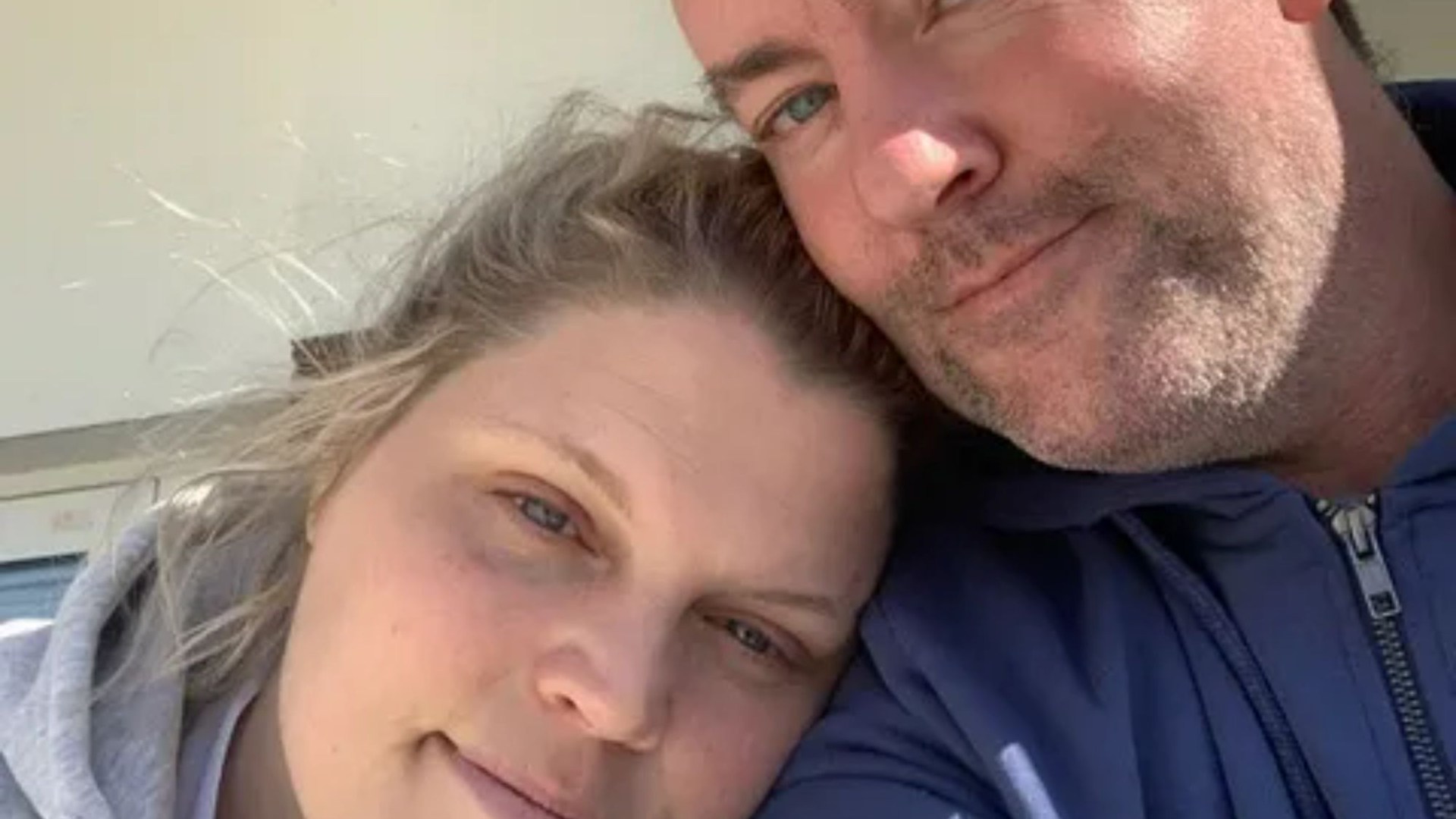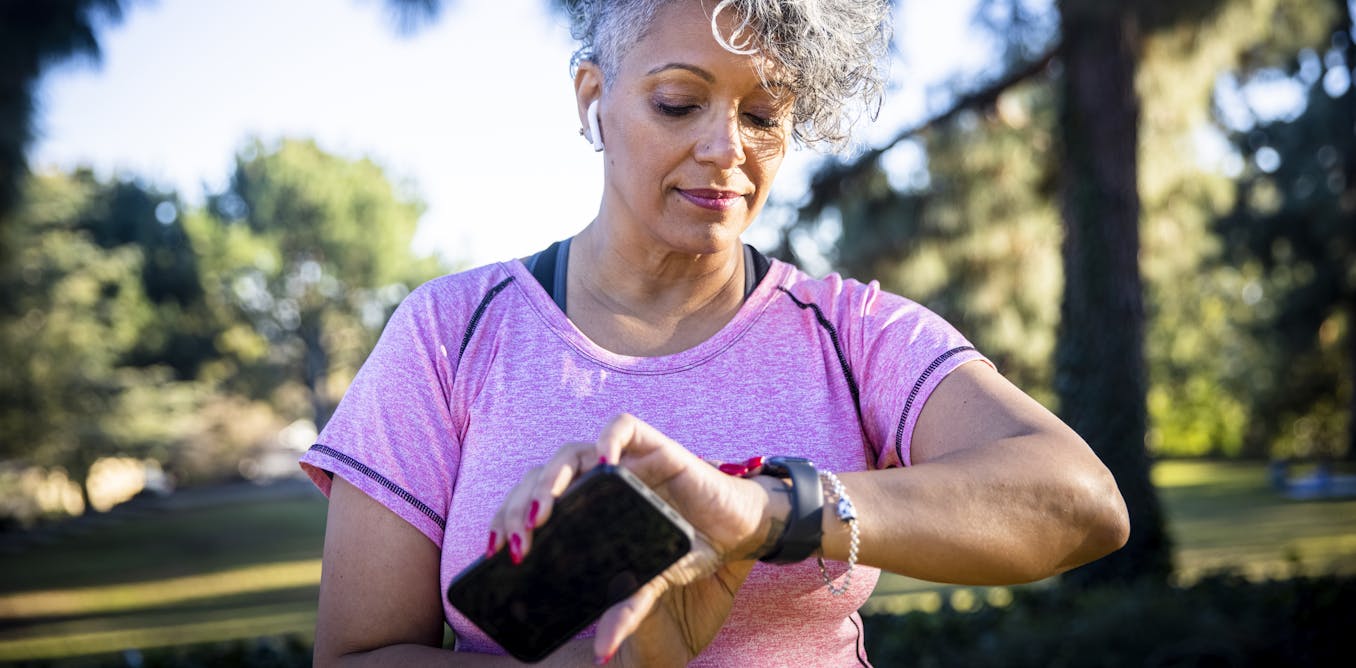A MAN described the terrifying moment he realised his pregnant girlfriend’s snoring was actually a heart attack.
Instinct kicked in for Magnus Kviske, 49, who called emergency services while “crying and calling for her to wake up”.
7

7

7

7
Magnus was reading in bed next to his partner Maja, 36, in April when he noticed she had drifted off to sleep.
Maja was seven weeks pregnant at the time and Magnus realised she’d started making a strange noise.
Though the sound wasn’t completely out of the ordinary, it made Magnus concerned.
“She started breathing heavy, laboured breaths, with just a slight snoring sound,” Magnus, an actor, recalled.
Read more on heart health
“I knew something was wrong, I just felt it.
“Some strange instinct kicked in and I grabbed Maja’s phone from the bed and started to call emergency services.”
Magnus put the phone on speaker and started to give Maja, a teacher, CPR.
He said: “When the operator answered, she confirmed quite quickly that I should continue with the CPR.
“By that time, I’d also got Maja down on the floor.”
He performed CPR on her for 11 minutes as the operator told him it could be a heart attack.
He said: “I was like a machine with only one goal: keeping Maja alive.
“But the more time that passed, the more worried I got.
“I did compressions and inhalations, I cried and called for her to wake up.
“But the operator was with me the whole time and wanted me to count out loud and talk to her too.
“She did everything for me to keep it together in order to help Maja in the best possible way.”
Agonising wait
Finally, an ambulance arrived.
Magnus recalled: “Eventually the care team arrived and people poured into the apartment.
“Some took care of me and some put away furniture to make more room for Maja.
“And for the first time I probably really realised what’s going on and I broke down while they run the defibrillator on her.”
At this point, Magnus was convinced his partner had died.
He said: “I believed I had lost my love and our unborn child.
“But after a while, a man comes over to me and says that she is breathing and has a pulse.”

7

7

7
Maja was rushed to the emergency room as Magnus waited nearby.
There, medics confirmed she had suffered from a heart attack.
Magnus said: “As the days went by, she started to wake up but would fall straight back asleep.
“I started to worry that her body had been damaged and maybe she’d never be herself again.”
But she finally woke up and looked at him.
He said: “Really looking at me. She sees me. Maja is back.
“It was the best moment of my life. To hear her and meet her gaze.”
‘Welded together’
Maja was then transferred to the cardiac intensive care unit where they both stayed for 11 days.
She had pacemaker – a small device device that sends electrical pulses to the heart to help it beat regularly – implanted, before being allowed home.
Magnus said: “During this time, we also had an early ultrasound as they wanted to check that the baby had made it.
“Luckily, it turned out to be okay, we were so happy when we got to see the baby’s little heart beating.
“The happiest moment despite all the crap that happened.”
In the beginning, Maja’s short-term memory was in tatters, but it slowly returned to normal after a few days.
Magnus said: “I remember not wanting to go home.
“I was terrified that it would happen again and how would I be able to sleep in the room where it all happened?
“It felt overwhelming.”
How to perform CPR
CPR stands for cardiopulmonary resuscitation.
It combines chest compressions and rescue breaths to give a person the best chance of survival following a cardiac arrest – when their hear stops.
If you find someone collapsed, make sure it’s safe to approach, check if they respond by gently shaking their shoulders and asking them loudly are they ok.
If they don’t respond, shout for help and open their airway by gently tilting their head back and lifting their chin.
Look, listen and feel for up to 10 seconds for normal breathing – ignore occasional, irregular gasps – these are common in the early stages of cardiac arrest.
If they are not breathing normally, ask someone to call 999 or 112 for an ambulance while you start CPR. Have them call on speaker and hold the phone near you. Also ask them to find a defibrillator if there is one available nearby.
If you are on your own, use the hands-free speaker on a phone so you can start CPR while speaking to ambulance control.
Start chest compressions. Ideally this should be on a firm surface so if, for example, they are on a bed, and if it is safe for you to do so, move them to the floor.
- Kneel close to the person and put the heel of your hand on the middle of their chest. Put your other hand on top of your first hand and if you can, interlock your fingers.
- Lean forwards so your shoulders are over your hands, keep your arms straight and press down hard, to a depth of about 5-6cm before releasing the pressure and allowing the chest to come back up.
- Push at a rate of 100 to 120 per minute
- Listen to instructions from the ambulance controller, who will tell you what to do and help you to push at the right speed.
If you are trained to do so, after 30 compressions, provide two rescue breaths:
- Tilt the person’s head backwards, lift their chin and pinch the soft part of their nose closed.
- Take a breath and put your mouth around the person’s mouth, to make a seal.
- Blow into their mouth steadily and firmly for up to one second, until the chest rises.
- Remove your mouth and watch the chest fall.
- This is a rescue breath, do this twice.
It is important not to interrupt chest compressions for too long so each time you attempt rescue breaths, stick to two attempts to get the breaths in. If one or both don’t work, return to chest compressions.
Keep alternating 30 compressions with 2 breaths (30:2) until:
- Emergency help arrives and takes over.
- The person starts showing signs of life and starts to breathe normally.
- You are too exhausted to continue – if you have someone to help you, you should swap every one to two minutes, but try to minimise interruptions to chest compressions.
- A defibrillator is ready to be used.
Source: St John’s Ambulance
But the couple, from Sweden, have made it through a tough few months.
He said: “Maja has been a rock in all of this.
“She has moved on with strong legs despite everything she has been through. She is my hero!
“The fact that the child survived and has been doing well is something that helped us a lot.
“We have been able to enjoy it.”
The incident happened in April and they are due to have their baby in November.
He said: “We have always had a strong relationship but now we have been welded together even more.
“We have a bond that cannot be broken.
“But lastly, it feels so important to me to convey how important CPR is! It saves lives and we are living proof of that.”




